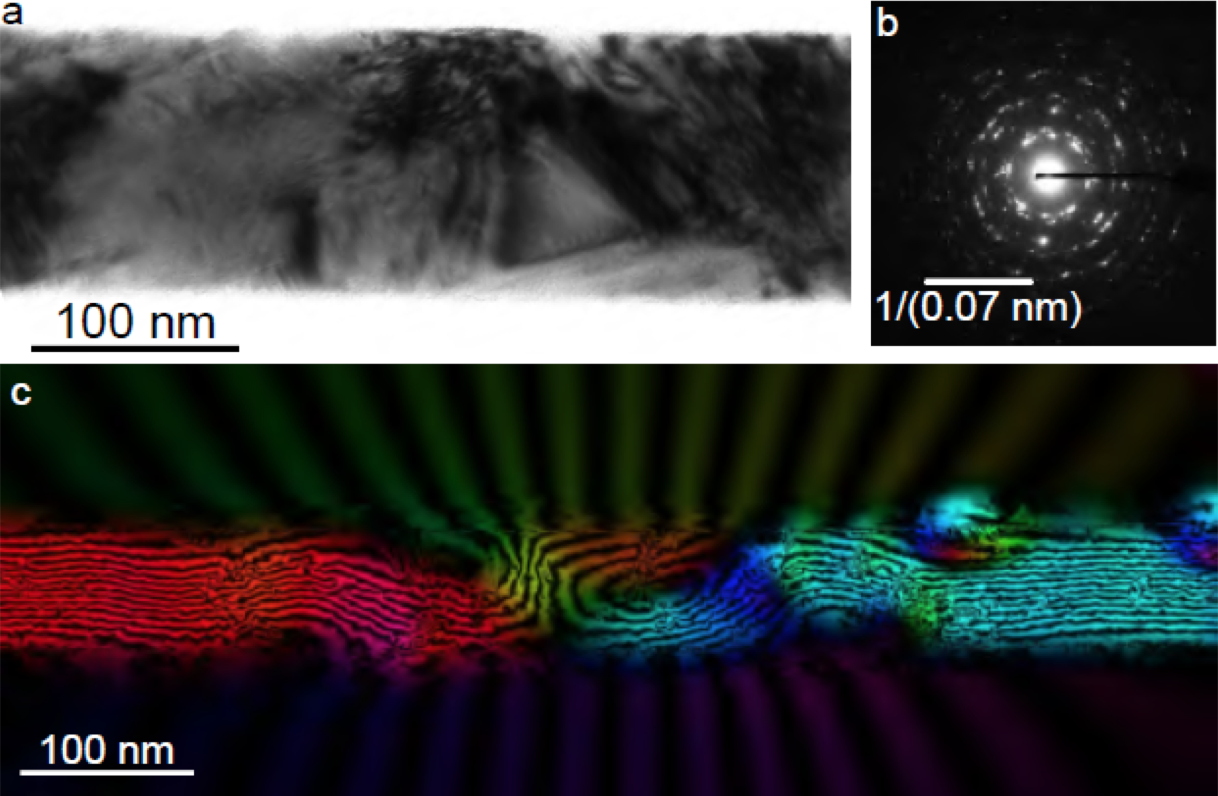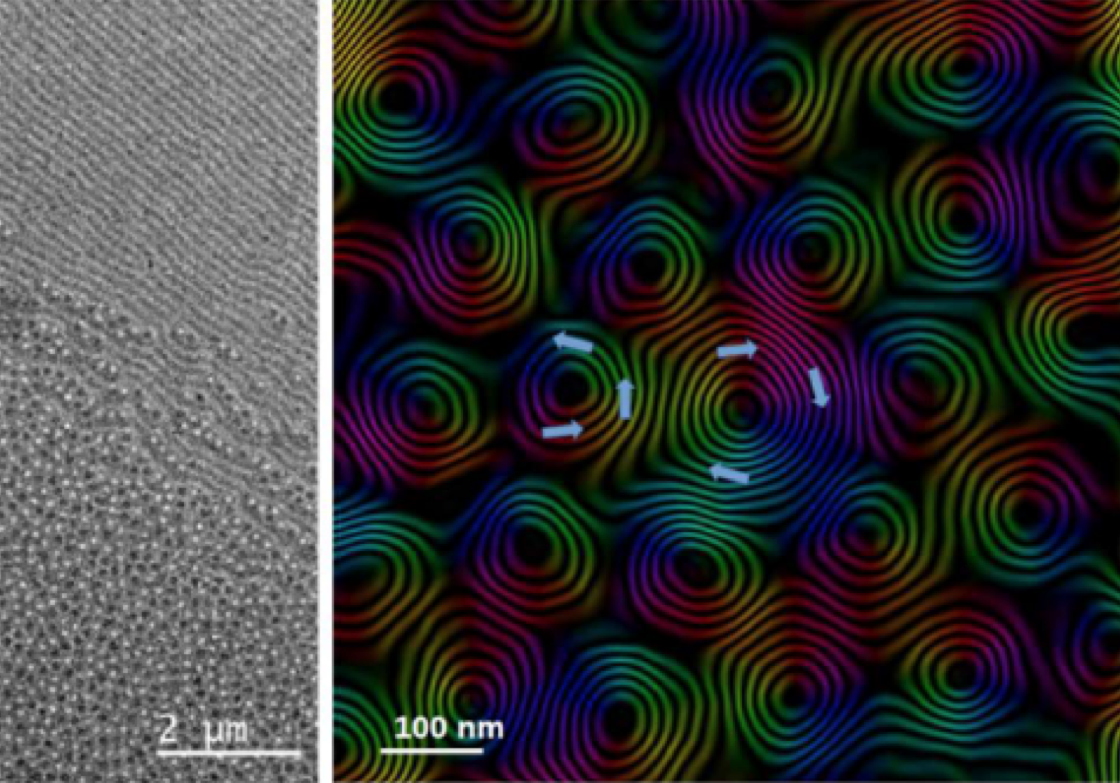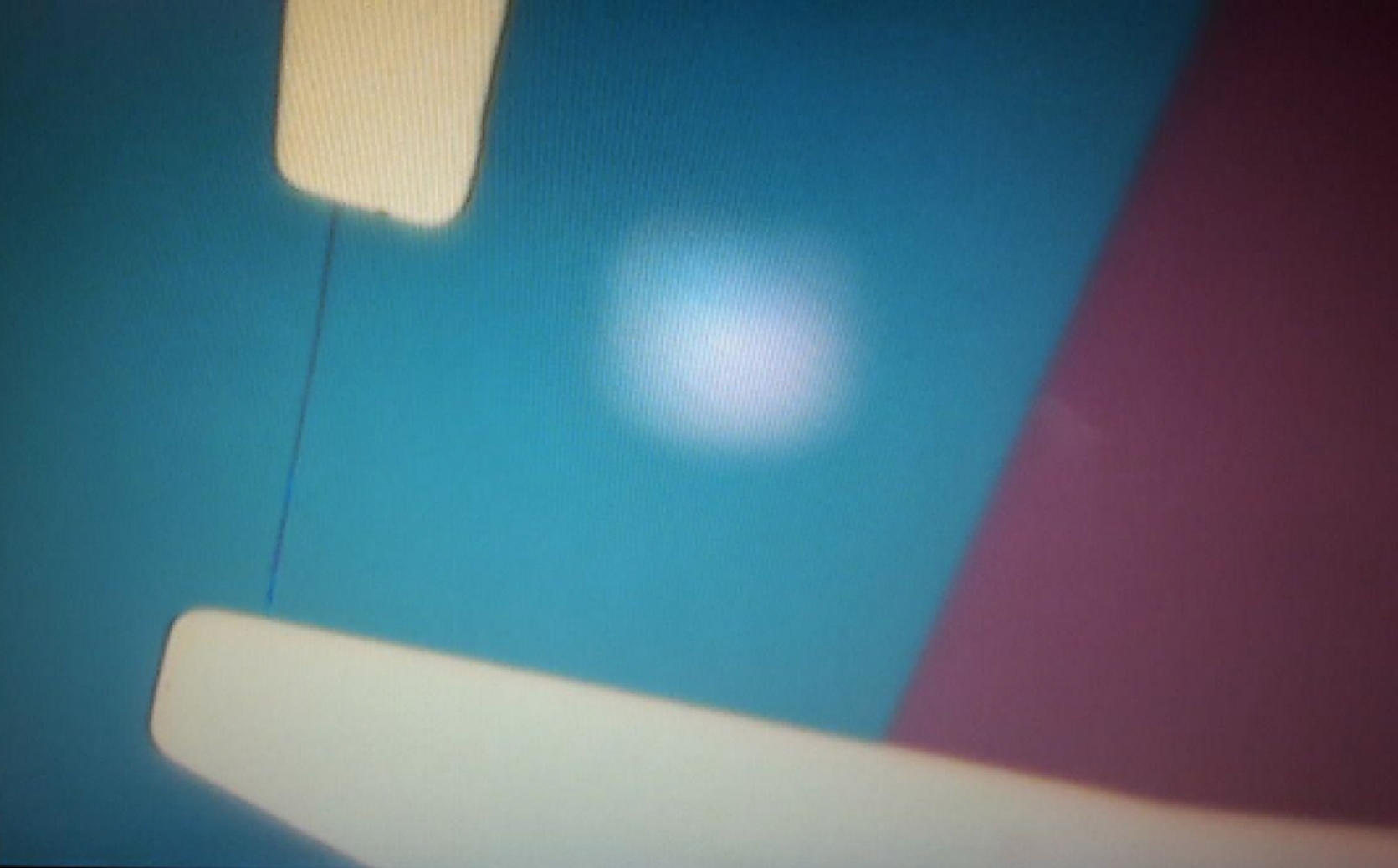Contact:
Aurelien Masseboeuf
We are developing magnetic imaging at the nanoscale to understand the magnetic parameters at play (anisotropy, exchange, magnetization, domain wall width) with the help of electron wave through interferometry techniques (Lorentz & Holography) as well as new methodologies (Stroboscopic TEM). These experiments are jointly made with
Spintec to correlate such analysis with other magnetic imaging technique based on Synchrotron X-rays probes – (S)TXM – and scanning probes – MFM – along with an
operando approach to operate magnetic devices through currents & electric fields (
in situ magnetic field being the routine part of the technique). Below are listed some of our current studies.
 Domain walls for RaceTrack memories
Domain walls for RaceTrack memories: One of the main challenges of spintronic is to provide a reliable and low consumption ways of moving domain walls in a tunable fashion with the help of the so-called Spin Transfert Torque effect (displacement of a magnetic wall thanks to a torque exerted by a current passing through it). Our aim is to map at the nanoscale the 3D magnetic texture in and around domain walls stored in 1D structures such as nanowires and nanotubes, contacted for being able to pass a current through them.
Figure: Correlation of structure and magnetic texture in a CoNi nanowire. Bottom (c)image is a composite image made of Holography : colour codes for direction of magnetization (red for right, blue for left) and black lines are displaying the magnetic flux. Magnetic Random Access Memories
Magnetic Random Access Memories: We aim at observing the operation of various form of MRAM that are one of the core subject of our CEA partner Spintec along with Leti. We thus implement various way of such observation from the mapping at the nanoscale of devices towards the capacity of being able to operate them in the TEM from STT operation to Spin-Orbit Torque (SOT) or voltage control anisotropy.
Figure: MRAM structure grown on a nanopillar radiating a magnetic flux. The magnetic stray fields are displayed around the structure with colour and black lines for magnetic flux. The structure is added in a conventional STEM image with an inset of EDX mapping of Mg (in the tunnel barrier) and Fe (in the CoFeB electrodes). Skyrmions structures
Skyrmions structures: The skyrmions are timely magnetic textures carrying a lot of promises in terms of information storage. These magnetic singularities are a standalone part of spintronic that rely on an interface engineering to promote for the so-called Dzyaloshinskii-Moriya interaction (DMI). These textures are observed in a broad spectra of materials from complex multi-layered ferrimagnetic materials (Gd-based) to sub-nm layers (Co) stacked in an antisymmetric fashion.
Figure: Magnetic bubbles emerging from a specific ferrimagnetic phase (FeGd) seen at two different magnification in Fresnel contrast (left) and focal series reconstruction (right) displaying the magnetic flux (black lines) as well as magnetization direction (colour). Stroboscopic TEM for Magnetic imaging
Stroboscopic TEM for Magnetic imaging: We are currently developing a new form of dynamical imaging through a full electrostatic blanking solution to promote pump probe experiments with the aim of reaching the GHz regime, the precessional time scale of nanomagnetism. We use for this a dedicated electronic developed by the
Sisyph, company as well as home-made electrostatic blanker to be used in the SA plane. We aim at observing the magnetic texture transformations at play in a dynamic fashion, relying on Fresnel contrast imaging with the help of magnetic modeling for their quantification.
Figure:
Magnetic nanowire (black line) contacted with gold pads (yellow) onto an electron transparent membrane (blue) made on a silicon wafer (purple) observed through optical microscope. Such device is used for developing high frequency imaging and operando magnetic imaging.